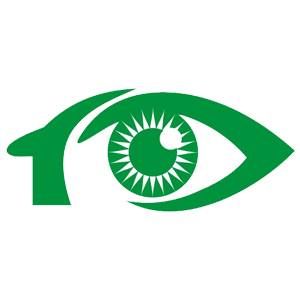预约演示
更新于:2025-08-14

He Eye Specialist Hospital
更新于:2025-08-14
概览
关联
1
项与 He Eye Specialist Hospital 相关的临床试验ChiCTR2500101550
Study of new smartphone accessory lens in the evaluation of orthokeratology lens
开始日期2025-05-01 |
申办/合作机构 |
100 项与 He Eye Specialist Hospital 相关的临床结果
登录后查看更多信息
0 项与 He Eye Specialist Hospital 相关的专利(医药)
登录后查看更多信息
19
项与 He Eye Specialist Hospital 相关的文献(医药)2025-10-01·AMERICAN JOURNAL OF OPHTHALMOLOGY
Efficacy of Cylindrical Annular Refractive Elements (CARE) Spectacle Lenses in Slowing Myopia Progression Over 2 Years
Article
作者: Yang, Youhua ; Li, Lihua ; Yu, Cui ; Liu, Nicole ; Chen, Xiaoqin ; Ohlendorf, Arne ; Sankaridurg, Padmaja ; Wu, Min ; Li, Wayne
PURPOSE:
To evaluate over a 2-year period the efficacy of spectacle lenses incorporating cylindrical annular refractive elements (CARE) in slowing myopia progression compared with single vision (SV) spectacle wear.
DESIGN:
Double-masked, multicenter, randomized clinical trial.
METHODS:
A total of 240 Chinese children aged 6 to 13 years, with a spherical equivalent (SE) refractive error of -0.75 diopters (D) to -5.00 D, were randomized to 1 of 3 groups of SV spectacle lens: CARE spectacles (7-mm central clear zone surrounded by treatment zone incorporating CARE with mean surface power +4.6 D) and CARE S spectacles (9-mm central clear zone surrounded by treatment zone comprising CARE with mean surface power +3.8 D). Cycloplegic SE and axial length (AL) were measured at 6-month intervals.
RESULTS:
Progression (mean ± SD) in SV-wearing eyes after 24 months of SPL wear was -1.15 ± 0.63 D and 0.59 ± 0.26 mm with SV for SE and AL, respectively. In comparison, myopia progression was significantly slower with both CARE (-0.73 ± 0.63 D/0.40 ± 0.26 mm, P < .0001) and CARE S (-0.80 ± 0.56 D/0.44 ± 0.25 mm, P < .0001). Progression did not differ significantly between CARE lenses. Adjusting for site, group, age, gender, and baseline value at 24 months, CARE showed an absolute difference in SE of 0.44 D (95% CI, 0.21-0.66 D) and CARE S 0.41 D (95% CI, 0.18-0.63D) compared with SV. AL reduction was 0.20 mm (95% CI, 0.10-0.30 mm) with CARE and 0.17 mm (0.07-0.26 mm) with CARE S compared with SV.
CONCLUSIONS:
Over a 2-year period, lenses incorporating CARE significantly slowed myopia progression compared with SV lenses.
2025-07-17·npj Digital Medicine
Intelligent screening of narrow anterior chamber angle based on portable slit lamp.
Article
作者: Yan, Hairu ; Dai, Guangzheng ; He, Xingru ; Dang, Yu ; Dong, Haifeng ; Zhang, Chenguang ; Che, Huixin
Primary angle closure glaucoma (PACG) is a major cause of irreversible blindness, characterized by shallow anterior chambers and narrow angles. In our study, we used anterior segment photographs from a modified mobile camera to develop algorithms for identifying narrow anterior chamber angles (NACA). We calculated eight biological parameters after preprocessing the images, segmenting the corneal and iris light bands, and modeling the central anterior chamber. In the training dataset, the accuracy of NACA identification using these parameters ranged from 0.68 to 0.85, with an AUC of 0.76 to 0.90. The internal test dataset's accuracy ranged from 0.65 to 0.85, with sensitivity between 0.40 and 0.95 and specificity between 0.61 and 1.00. An ensemble model achieved a sensitivity of 0.90 and a specificity of 0.85 on the internal test dataset, but its performance declined on external datasets. Despite generalization challenges, portable slit lamps equipped with advanced algorithms show promise for NACA screening.
2025-07-01·Contact Lens & Anterior Eye
Letter to the editor RE “The effectiveness of orthokeratology lenses in myopia prevention and control.”
Letter
作者: He, Wei ; Yang, Fan ; He, Xingru ; Zhang, Qiuyue ; Qin, Guanghao ; Yu, Sile ; Chen, Jiayan
30
项与 He Eye Specialist Hospital 相关的新闻(医药)2025-05-16
·动脉网
近期,消费医疗企业相继披露一季报,不看不知道,一看吓一跳,除极个别幸运儿之外,几乎都在断崖式下跌。 图1.消费医疗企业2025年一季度营收和净利数据(动脉网制图)以净利润这一关键指标为例,不仅绝大多数都呈下降态势,并且降幅比例之大,超过40%以上的就多达7家,而在大幅收缩之后,不少消费医疗企业当前的净利润额已不足亿元,甚至有不少已经历史性地“转盈为亏”。典型案例如万泰生物,作为前首富钟睒睒的疫苗生意,一季度归属上市公司股东净利润为-5277.7万元,同比下降141.98%。不过,疫苗并非个例,从医美、眼科、牙科、医药零售、品牌中药到生长激素,消费医疗各个细分领域的龙头都在2025年一季度交出了史上最差“成绩单”。比如医美领域的昊海生科,一季度营收和净利润首次出现单季度“双降”;眼科领域的爱博医疗也未能幸免,一季度净利降幅10.05%,是近20个季度首次出现利润同比下滑;“东北药茅”长春高新也是如此,一季度营收降幅5.66%,净利降幅44.95%,是其20年来首次营收净利“双降”。在市场寒冬下,大家的日子难过并不是什么新鲜事,但作为兼具高增长和暴利代名词的消费医疗,日子如此难过还是头一回。那么,原因是为何呢?曾经创造无数业绩神话的消费医疗,为何会在当下沦落到这般境地?01崩盘,早有苗头消费医疗的全面崩盘并非一日之寒。以最具代表性的医美领域为例,早在2023年,华熙生物就开始走下坡路,当年归母净利润同比减少39%。但这并没有引起太多人注意,因为彼时,爱美客和昊海生科仍保持着高增长态势,2023年爱美客营收涨幅47.99%,昊海生科营收涨幅则为24.59%,均为历史最高水平。但在进入2025年之后,爱美客、昊海生科也不灵了,营收和净利都在大幅收缩。而增长失速的不只有医美,还有被寄予厚望的“金眼银牙”。牙科不必多说,过去几年一直深陷“闭店潮”,截至2024年,全国多家连锁口腔医院的倒闭率已高达30%。眼科同样在沦陷,以爱尔眼科为例,2024年其营业收入增速创下上市16年以来新低,而扣非净利则出现上市以来首次负增长。在一片低迷之中,一个疑问当前已愈发响亮:消费医疗集体呈现业绩疲态的深层次原因到底在哪?首先一点当然是“消费降级”,这几乎是所有消费领域的通病。事实上,消费医疗的大爆发主要源于中产家庭,他们曾经不计成本追求美丽,使消费医疗在短时间内获得了高速增长,但随着经济下滑,他们也开始精打细算,并将家庭内部的可调配支出来保证最重要的消费,因此逐渐减少了医美、看牙等追求美丽层面的支出。其次是激烈的行业竞争,导致市场价格大幅走低,这进一步挤压了利润空间。以乔雅登雅致为例,在最高峰期其市场价格每支高达5000-9000元,但随着竞品增多,为了留住市场份额,乔雅登雅致只能采取降价策略,在2023年双十一期间其价格大幅降至1999元,这两年甚至出现了980元的“骨折价”。究其原因,还是在于其技术壁垒不高,所以一旦遭受新品围攻,其先发红利将很快被稀释,后续只能采取“低价策略”。然后是存量市场的过度开发,使行业当前已经进入瓶颈期。以九价疫苗为例,其在刚上市的前几年一直是“一针难求”,深圳每月超20万人参与摇号,但中签率低至1.7%,而为了“抢苗”,不少客户不惜专程到香港澳门进行接种,甚至将价格炒到一针上万元的天价,但即便如此,愿意为之买单的仍然是大多数。不过好景不长,九价疫苗很快就陷入了“库存积压”的尴尬。以智飞生物为例,2023年其九价疫苗批签发量3655.08万支,而实际销量仅2749.06万支,库存高达4209.6万支,这使得全国多地出现了“随到随打”的景象。而之所以会如此,主要是因为国内适龄女性能打的当前基本都打了,据国金证券推测,截至2023年底,国内HPV疫苗累计接种率(以9-45岁女性作为基数)已经接近20%,两年前,这一数据还只有3%。最后一点则是政策因素,主要是受集采和监管影响。先说集采,以爱博医疗为例,作为国内首家高端屈光性人工晶状体制造商,自上市以来其一直保持高增长态势,但随着2024年人工晶状体全国集采落地,公司产品中标价从3200元/片降至2200元/片,降幅31%,这直接导致公司在今年一季度手术业务收入和毛利增速放缓。同样遭受集采大棒的还有何氏眼科,其北京的屈光手术价格已从2万元左右降至目前的1.7万元,而其他城市价格则更低,例如贵州的价格已经接近1.1万元。接着再谈监管,这无疑是消费医疗企业近些年感受最深的一大变化,尤其是在“重灾区”医美领域。2024年,国家药监局修订《整形美容用透明质酸钠类注射填充剂注册审查指导原则》,要求加强临床试验数据审查;市场监管总局严打医美广告虚假宣传,查处“制造容貌焦虑”等违规行为。这直接带来的就是“合规成本”的显著上市,因为需要投入更多资源用于医生培训以及产品认证,以锦波生物为例,2024年其销售费用同比增长56.73%,这进一步侵蚀了利润。不难看出,在集采、消费降级、市场竞争等多种因素下,消费医疗这台“印钞机”的速度当前已大幅降低,甚至出现了停摆的状态。02倒逼之后,“多元化”道路前途未卜过去几年,消费医疗一大关键词就是“转型”,也就是开拓第二增长曲线,而这主要是受业绩承压的影响。以玻尿酸“三剑客”为例,其早早就开始通过收并购快速布局肉毒素以及胶原蛋白领域,之后几年,又相继踏入光电医美、减肥等热门板块。但从实际表现来看,其战略成效远不及预期。 图2.我国肉毒素市场目前呈现“六分天下”格局(动脉网制图)这一方面是因为管线进展缓慢,以爱美客为例,其肉毒素、第二代埋植线、司美格鲁肽注射液等关键项目当前仍处于临床试验或申报阶段。而在彼时,市面上已有不少同类成熟产品,这意味着其不仅没有了先发优势,并且在上市之后,还要面临激烈的行业竞争,因此其利润空间很难有质的提升。另一方面则是源于高溢价收并购,这产生了巨大的成本消耗。仍然以爱美客为例,近日,其为了快速弥补产品线短板,以高出市场价13倍的价格收购韩国REGEN公司85%股权,并以此拿下“童颜针”AestheFill的生产权。但值得一提的是,AestheFill的中国独家代理权早已被江苏吴中获得,因此爱美客后期还需重新构建销售渠道,协同效应存疑。而陷入扩张怪圈的并不只有医美,还有眼科领域。过去几年,为快速抢占市场份额并做大做强,包括爱尔眼科、华厦眼科以及普瑞眼科等,都在积极开展收并购行动,特别以爱尔眼科为例,截至2024年年末,其境内医院规模已从2022年的215家扩张至352家。虽然其为此带来了巨大的营收,但与此同时,也让其承担了更大的经营成本,而这直接造成爱尔眼科扣非净利在2024年首次下降。对此,某消费医疗领域资深投资人谈道,“并购扩张虽然能够在短期内增加收入和利润,但同时也要面临整合、债务风险以及管理挑战等难题,而一旦营收增速放缓,不够支撑扩张成本,这会很快转化为企业的经济压力。”事实上,消费医疗企业“多元化”的路径并不只有扩张,还有开拓新的适应症,但从现阶段来看,其市场效果同样不理想。以九价疫苗为例,2025年4月15日,万泰生物披露“九价HPV疫苗启动男性III期临床试验并完成首例受试者入组”的公告,但这并没有引起市场太大反响,与几年前九价HPV疫苗获批上市引来市场剧震形成了鲜明对比。生长激素同样面临这一问题,虽然国内生长激素绝大部分应用还集中在儿童矮小症上,但其在生殖、烧伤以及抗衰老领域也有着重要作用。以金赛药业为例,其重组人生长激素粉针适应症当前已增加到11种,但从目前来看,除儿童矮小症之外,其他适应症对于提升业绩表现的帮助并不大。对此,某资深投资人分析了其中原因,“事实上,在相同应用领域,比如抗衰老,当前已经有不少成熟产品,而生长激素并没有在具体效果上表现出明显优异性。另外,从市场认可度来看,生长激素长期与儿童矮小症绑定,患者很难将其与抗衰甚至是烧伤联想到一起,因此并不愿意为之付费。”不难看出,虽然消费医疗企业当前都在通过各种途径创造营收,但现阶段收效甚微,甚至一部分还因为转型产生的巨大成本陷入了盈利怪圈。03暴利时代结束,未来会是“技术流”的胜利据粤开证券统计,国内消费医疗对应万亿级市场规模。其中,眼科、口腔科、辅助生殖等专科医疗领域市场规模可达3826.2亿元,预计2025达到6058.8亿元;医美领域市场规模达到2267亿元,预计2025年达到3529亿元。这也就是说,消费医疗整体的发展潜力依然很大。但同时,行业也需要清晰认识到,消费医疗未来已经很难再复制过去10年的高增长奇迹,这主要因为行业的逻辑已经悄然发生改变。在过去,因为市场需求很大,再加上信息差,很多消费医疗企业光靠营销轰炸就能躺赚,并创造了一个又一个业绩神话。但随着市场需求逐渐趋于饱和以及行业快速发展,这一“黄金时代”已经结束,一个残酷的新周期正在降临,所有人都要向产业纵深发展、向精细经营要增长要未来。具体而言,就是体现在三个关键层面:深耕创新技术、建立差异化服务以及控制获客成本。技术层面不必多言,就是通过研发提高疗效,或者不断推出新的划时代产品。比如近一两年火爆全网的童颜针、少女针、三文鱼针以及羟基磷灰石等,实际上就是技术创新的结果,将某一成熟技术成功跨界应用到医美领域。这在研发投入层面也得到了验证,2024年玻尿酸“三剑客”研发投入增速都维持在10%左右,其中爱美客高达21.41%。然后是在差异化服务上,因为消费医疗技术含量普遍不高,所以产品同质化现象较为严重,因此想要脱颖而出,往往需要付出更大的销售成本。但差异化服务则可以有效缓解这一压力,一方面是选择不同的应用领域和使用人群切入,以巨子生物为例,其专注于胶原蛋白领域,目前已储备近10种型别的重组胶原蛋白类型,这使其在业绩上得到了正反馈,2024年,巨子生物营收和净利增速都超过了40%。另一方面则是在具体服务上做出明显差异。以爱尔眼科为例,过去几年,其相继推出“医生首诊和一对一亲情化服务”、“全球异地复查与终身眼健康管理”、“爱尔眼科近视手术质量控制体系”等个性化服务,其目的不言而言,就是希望能够将服务做得更加精细,更好地服务患者,以此形成品牌效应。最后提到的是控制获客成本,这主要是通过介入一些新的技术,或者接入一些新的市场渠道,在有效的预算之内将利益最大化。以某家连锁眼科诊所为例,在嵌入AI技术获客之后,其客户留联率从38%提升至60%,且成本从200元/人降至68元,ROI(投资回报率)提升至42%。 图3.锦波生物薇旖美销售情况(动脉网制图)此外,一些新的平台也可以帮助消费医疗企业在获客上“降本增效”。典型案例就是小红书,根据德勤发布的《中国医美行业2024年度洞悉报告》显示,目前88%的医美用户是从小红书获取医美信息,这显然为其带来了巨大流量。2024年6月,薇旖美销量正式突破百万瓶,在这个过程中小红书功不可没,不仅有近百款产品在平台进行售卖,另外在重组胶原蛋白相关分享里,薇旖美的提及率也长期处于首位,这为其创造了大量营收。事实上,消费医疗过去的爆发式增长,一定程度上是提前透支了未来几年的需求。但当市场逐渐回归理性,就要求消费医疗企业要快速完成转型:从原先粗放式的高度依赖营销的新兴市场模式,变成精细化管理的依赖复购的成熟市场模式。这是前所未有的挑战,当然也是千载难逢的机会。* 参考资料:1.《消费医疗,加速崩?》——氨基观察;2.《消费医疗大崩盘:从HPV疫苗到生长激素的血泪史,谁能穿越这场“尸山血海”?》——医道社;3.《消费医疗全线失速:“医美茅”过上苦日子,“金眼银牙”也不灵了》——华夏时报。*封面图片来源:123rf如果您认同文章中的观点、信息,或想进一步讨论,请与我们联系;也可加入动脉网行业社群,结交更多志同道合的好友。近期推荐声明:动脉网所刊载内容之知识产权为动脉网及相关权利人专属所有或持有。未经许可,禁止进行转载、摘编、复制及建立镜像等任何使用。文中如果涉及企业信息和数据,均由受访者向分析师提供并确认。动脉网,未来医疗服务平台
财报疫苗
2025-04-09
·动脉网
近期,一款用于近视手术的国产“ICL”引发业界关注——2025年1月,爱博诺德旗下的龙晶PR型有晶体眼人工晶状体获批上市,目前,首批植入手术正在全国各地眼科医疗机构开展,社交平台上也已有早期手术患者分享植入后的体验。在此之前,国内近视手术屈光晶体几乎由STAAR Surgical AG(以下简称STAAR)的EVO ICL所垄断,整体手术费用常年保持在高位,约2.8万-3.4万元,甚至更高,是最昂贵的近视手术。借助中国屈光晶体植入手术需求的增长,STAAR公司业绩一路飙升;近两年来中国市场年收入均超过1.5亿美元,成为公司收入支柱。如今,除了新上市的龙晶PR之外,国内还有昊海生科、麦得科、眼得乐等企业的有晶体眼人工晶状体产品正在研发中,随着未来更多国产产品上市,市场格局有望改写。01打破垄断,只是个开始当前,屈光手术按解剖位置的不同主要分为角膜屈光手术和眼内屈光手术。对于高度近视或薄角膜患者,角膜屈光手术可能增加术后屈光回退、角膜扩张等并发症的风险。此时,作为主流的眼内屈光手术,有晶体眼人工晶状体植入术显现出优势,它具有矫正范围广、手术创伤较小、可逆(即晶体可取出)等特点,让更多患者可通过屈光手术实现“摘镜”。就晶体植入来说,STAAR公司的EVO ICL以往在国内几乎处于垄断地位。以相同植入方式来看,龙晶PR是国内首个打破EVO ICL垄断的产品,主要实现了材料、光学设计等方面的突破。STAAR公司的核心竞争力之一是其晶体材料——Collamer,一种胶原蛋白共聚物,具有柔软、弹性好、生物相容性高等特点。龙晶PR则采用了专利Balacrylic平衡型丙烯酸酯材料,具有高折光指数,可在增大光学区的同时,减少晶体厚度。企业公开信息显示,龙晶PR光学区直径最高达6.0mm;结合非球面双凹面型设计,后表面更加平坦,周边拱高更开阔。产品规格方面,龙晶PR总直径为11.5mm至14.2mm,包含10个型号,以0.3mm为间隔,以匹配不同的睫状沟直径;可矫正的屈光度从-3.25D至-18.00D,以0.25D为间隔,可进行更精准的高度近视矫正。这些特点,都能更好地满足患者对个性化矫正的需求。总的来说,龙晶PR主要从更大光学区、更细的型号划分、更低的前房深度要求等方面,突破了EVO ICL的现有局限。国内已上市的有晶体眼人工晶状体产品,资料来源:高端医器院数据中心、企业公开信息事实上,龙晶PR之前,国内已有另一款有晶体眼人工晶状体上市,即昊海生科旗下的依镜PRL。不过,依镜PRL与龙晶PR、EVO ICL在适应症及产品形态方面有较大差异。依镜PRL主要针对屈光度-10.0D至-30.0D的高度和超高度近视人群,且依镜PRL总直径更小,加之其材料与房水比重约为1:1,植入眼内后无需“卡”在睫状沟内,而是悬浮于眼后房空间。作为擅长多种屈光手术的专家,兰州华厦眼科医院院长燕振国谈到,当EVO ICL和龙晶PR都无法覆盖的超高度近视,或患者房角较窄、睫状体有囊肿等情况下,依镜PRL成为唯一手术选择。因此,严格来说,依镜PRL与另外两大产品并非直接的竞争关系,只是受适应症所限,患者群也有限。昊海生科财报显示,2021年以来,依镜PRL母公司(杭州爱晶伦)的营业收入在300多万元至500多万元之间,这与同时期EVO ICL在中国市场上亿美元的年收入并不在一个数量级(依镜PRL植入与EVO ICL植入在医疗机构的整体手术费用接近)。依镜PRL母公司近几年收入情况(万元),数据来源:昊海生科财报动脉网了解到,在初步打破进口垄断的同时,仍有国产在研产品蓄势待发,针对材料、设计等进一步突破。例如,麦得科的MPL在此前进入东南亚、欧洲和韩国市场的基础上,正在推进国内研发注册。麦得科CEO刘梁告诉动脉网,MPL国内临床试验已经结束,预计2025内提交注册申请。MPL以疏水性有机硅作为主要材料,该材料在全球作为眼内植入物已有20多年应用历史,证明了材料拥有很好的生物相容性及安全性,与EVO ICL相比折光指数更高、更软,可设计更大的光学区、实现更薄的厚度,以及更广的矫正范围,最高可达-28.00D。昊海生科自2020年收购杭州爱晶伦后,就即着手对PRL产品进行升级,第二代房水通透型产品与前一代产品相比,将实现房水循环,并提供更广泛的视力矫正范围。该项目正处于临床试验阶段,受试者正陆续完成全部临床观察,预计将于2025年年内启动产品注册。此外,眼得乐采用拥有全球专利的交联聚烯烃材料设计开发新一代有晶体眼人工晶状体,生物相容性更好,以减少不良反应的发生。02进口产品业绩下滑,国产窗口期已至?对于一个单一品牌垄断多年的细分市场,国产新品能顺利打开局面吗?首先需要来看STAAR的“发家史”。STAAR的迅速崛起,离不开中国市场的支撑。中国高度近视患病率高,过去,当这些患者做屈光手术的意愿强烈,却又不满足角膜屈光手术条件时,STAAR的ICL晶体植入成为主要选择。STAAR自2006年进入中国市场后,2014年在国内推出带有中心孔设计的ICL V4c型号(即目前的EVO ICL),进一步提升手术安全性、减少手术创伤。自此,STAAR业绩一路飙升。财报数据显示,2015年STAAR公司全球收入约7700万美元,中国市场收入仅为15.4%,约1200万美元。此后的10年里,中国市场收入迅速增长,在公司整体收入中的占比不断扩大,推动公司整体业务增长。峰值出现在2023年,这一年中国市场为STAAR公司贡献了1.83亿美元的收入,占公司全球市场收入的57.6%,STAAR的全球收入也达到了3.22亿美元的巅峰。STAAR公司近10年来中国市场及全球市场收入情况,数据来源:公司财报然而,涨势在2024年发生了转折。据STAAR最新财报显示,2024年公司总收入约3.14亿美元,同比下降3%,中国市场的业绩表现对公司整体业绩造成了重大影响;2024年,中国市场收入约1.61亿美元,同比下降13.1%。STAAR将大幅下降的原因总结为“经济低迷和消费者消费疲软导致ICL手术的需求波动”。此外,STAAR还遭遇了2018年以来的首次亏损,2024年亏损约2021万美元。为了应对挑战,2025年以来,STAAR已接连宣布管理架构及高管调整、工厂裁员的决策。纵观公司发展历程可以发现,过去10多年里,STAAR与中国市场相互成就:STAAR用一款产品就在中国市场吃到了近视手术需求增长的红利,很长时间以来,ICL手术费用也保持在较高的水平,普通晶体双眼2.8万元左右,散光晶体双眼3.4万元左右;与此同时,STAAR大力推广EVO ICL,培养出大量手术医生,有效提升了中国患者群体对晶体植入手术的认知度与信任度,实现了技术与市场的双向促进。不过,EVO ICL于2014年在中国获批上市,距今已超过10年。长时间的临床应用,优势在于安全性和有效性得到充分验证;但另一个问题也随之出现,没有新产品满足患者更高的需求。EVO ICL的一大局限在于,光学区有限,难以满足大暗瞳患者的矫正需求。作为STAAR全球市场的新一代产品,EVO+ ICL拥有更大的光学区,可减少术后眩光的发生,覆盖暗瞳较大的患者群。尽管该产品2015年就已获CE认证,但至今仍未在中国内地上市。目前,EVO+ ICL仅在中国香港地区上市,以及落地博鳌乐城作为特许手术项目开展。据了解,中国香港或海南博鳌EVO+ ICL手术的整体费用约为6万-8万元,相当于EVO ICL的两倍多。虽然两地吸引了一些需求紧急且“不差钱”的患者前往手术,但动脉网从医疗机构了解到,对于一些无紧急需求的患者来说,更愿意推迟手术计划,希望等待EVO+ ICL在中国内地上市。而近期上市的国产龙晶PR,同样拥有大光学区,手术费用与EVO ICL普通版接近。海外已上市的有晶体眼人工晶状体产品,资料来源:企业官网再看全球其他企业和产品。包括STAAR的EVO系列在内,Biotech Healthcare、Care Group、Medennium、Ophtec等多家公司的产品或已有较长时间的临床应用(产品大多为后房植入晶体,仅Ophtec旗下产品为前房晶体、置于虹膜),或布局了功能多样的产品线。其中,麦得科收购了Medennium,并着手将其MPL晶体引入国内;除此之外,由于STAAR已在中国有极高的市场占有率,暂无公开资料显示更多的海外产品会在短期内进入中国市场。总的来说,STAAR公司在中国市场处于需求波动、新老产品交替的阶段,加之短期内没有更多进口产品进入,未来一段时间或许正是国产差异化产品快速拓展市场的窗口期。03国产突围,产品力与品牌影响力缺一不可当前,打破进口垄断已是眼科领域的大势所趋,无论是屈光手术产品、高端影像产品、眼科诊断产品,如何提升技术创新能力及产品应用性价比,都已成为重要的行业议题。就屈光手术晶体而言,尽管国产有晶体眼人工晶状体已燃起小火苗,但可以肯定的是,STAAR的市场地位短期内仍然难以撼动,EVO系列产品的标杆价值仍然存在。整体来看,国产既需要足够的产品力体现临床应用价值,也需建立起强大的品牌影响力,获得在医生与患者中的信任度。从临床需求的角度,兰州华厦眼科医院院长燕振国坦言,即便包括EVO ICL在内,已上市的屈光晶体也还有改进空间。例如,EVO ICL可矫正度数受到限制,且因材质柔软,部分患者术后拱高下降明显。国产产品中,龙晶PR的材料偏硬,对手术医生的经验和操作要求高,且暂不能矫正散光;依镜PRL未设计中心孔,为了保障房水排出,术前一周需行虹膜根部激光孔。此外,在产品功能相近的情况下,国产还需合理定价,体现出价格优势。麦得科CEO刘梁也认为,对国产产品来说,临床价值尤为关键。以悬浮型晶体为例,由于这类产品无需精准“卡”在睫状沟,减小了医生测量睫状沟以及精准选择晶体型号时的挑战,中心孔的设计能更好地避免医生额外增加虹膜切开术,未来也有利于进入下沉市场。品牌力方面,STAAR公司及其EVO ICL已在众多医生中形成了“案例多效果好”的认知,也在大量患者中形成了“全球第一”甚至“全球唯一”的印象。国产产品需通过鲜明的品牌形象,打破医患的原有认知。屈光手术的选择固然要基于严格的眼科检查,以检查数据与产品适应症的匹配度为前提,但若患者满足多种手术条件,就对手术方式或产品有决策权。因此,面向患者的科普同样重要。目前,全国各地眼科医疗机构纷纷宣传本机构已开展了首批国产龙晶PR晶体植入;社交平台上,医生大V对国产晶体进行科普,向大众展示国产产品光区大、型号多的功能特征;也有部分达人以“国产黑科技”的定位展现国产晶体面世这一信息。作为眼科头部医疗机构的何氏眼科,过去几年一直通过采购、合作、投资、自主研发等方式来参与推动眼科的创新,在眼科药、器械、AI及数字化方面都有大的动作。5月9日,动脉网与何氏眼科即将共同举办一场眼科产业创新与发展论坛,在苏州进行线下交流,探讨国产眼科创新企业如何挑战国际巨头,加速国产眼科创新企业在技术与商业化上的突破,加强创新企业和医疗机构的合作。欢迎大家点击报名。总的来说,近几个月来的集中亮相,为国产近视屈光晶体的品牌塑造开了个好头。后续新产品的面世,也需精准提炼其核心价值,生动直观地向大众展现国产差异化优势。近视屈光晶体产品不仅存在相同适应症下不同产品及企业之间的竞争,更存在与角膜屈光手术的竞争。与角膜屈光手术相比,晶体植入手术主要局限在于:价格高、个性化程度不足,以及患者信任度还有待提升。“在国内,屈光晶体植入术占屈光手术的比例还不到20%。”刘梁坦言,以往国内几乎只有EVO ICL一个产品,医生患者都没有更多选择,未来随着更多参与者加入,患者受教育程度、医生理念都会发生变化。“随着手术的安全性和有效性被更多医患认可,晶体植入比例有望增长至40%-50%,同时屈光手术的整体渗透率也会增长。”参考资料:徐静静, 俞益丰, 熊健. ICL V4c 植入术的安全性和有效性研究进展[J]. 实用临床医学, 2024, 25(4): 129-132.*封面图片来源:123rf如果您认同文章中的观点、信息,或想进一步讨论,请与我们联系;也可加入动脉网行业社群,结交更多志同道合的好友。近期推荐声明:动脉网所刊载内容之知识产权为动脉网及相关权利人专属所有或持有。未经许可,禁止进行转载、摘编、复制及建立镜像等任何使用。动脉网,未来医疗服务平台
上市批准
2024-12-25
·药闻康策
消费医疗因兼具消费和医疗双属性,还携带免疫集采、千亿市值、高速增长等高亮标签,一直深受资本市场热捧。但一场疫情,似乎直接击垮了这个赛道。
据统计,今年月均失业率最高为5.4%,中国似乎正在经历有史以来最夸张的一次失业潮,各行各业好像都陷入在疯狂裁员和内卷的双重折磨中。
整体经济疲软下,消费降级成为主基调,随之而来的就是国内消费医疗的全面崩溃。
01
集体崩溃
从今年消费医疗各家龙头的表现,可以窥见端倪。从医美、眼科、牙科到医药零售、品牌中药,再到生长激素、自费疫苗,各个细分领域的巨头,居然集体失去成长性。
医美领域,爱美客今年第三季度营收7.18亿元,同比微增1.1%;净利润4.64亿元,同比增长2.13%。这是爱美客营收、利润增长率首次降至个位数,大幅下滑态势明显;昊海生科在经历Q2业绩昙花一现的高光后,Q3季度又被打回原形:第三季度营收6.7亿元,同比上升0.22%,净利润1.06亿元,同比下降13.13%。
而华熙生物作为“最拉胯”的医美巨头,财报数据更是一言难尽,第三季度营收10.64亿元,同比下滑7%,净利润0.20亿元,同比下滑77%。
在玻尿酸红利消退后,抗衰新贵重组胶原蛋白因毛利率远高于玻尿酸,成为医美行业新风口,吸引了医美三剑客加码布局。只不过,在胶原蛋白领域,相较于巨子生物、锦波生物等公司,这三家医美巨头起步较晚。
口腔领域,通策医疗2024年第三季度营收8.225亿,同比仅增长0.04%,营收增长接近0,净利润1.885亿,同比下滑9.1%。
值得一提的是,在耗材集采推行后,通策医疗的种植牙业务盈利模式由从“高毛利”转换为“以价换量”;目前,种植牙业务从过往的追求定制化逐渐转向流水线作业,三级公立医疗机构单颗常规种植牙的医疗服务价格为4500元,种植体系统集采平均降价55%。通策医疗的利润空间被大幅压缩,毛利率严重下滑。
眼科领域,兴齐眼药所倚重的国内首款延缓近视的0.01%阿托品滴眼液今年3月获批上市,机构普遍预测今年销售额超15亿元,未来年销售峰值超50亿元。然而据兴齐眼药2024年中报,估计该款产品Q2销售额仅1.7亿元左右,大单品的逻辑似乎证伪。
而国内角膜塑形镜(OK镜)一哥,欧普康视的业绩也同样萎靡。今年第三季度营收5.48亿元,同比上升1.55%,净利润1.98亿元,同比下降12.84%。并且,欧普康视的毛利率呈现逐年下滑趋势。
相较之下,眼科医院的处境更为艰难,普瑞眼科、何氏眼科、光正眼科今年第三季度分别亏损0.27亿元、0.08亿元、0.22亿元。就连国内连锁眼科医院老大也不能幸免,爱尔眼科2024Q3营收57.56亿元,同比下降0.68%,净利润14.02亿元,同比下降4.56%。
此外,截至今年三季度末,爱尔眼科商誉金额高达87.17亿元,同比上涨47.72%,占总资产比例高达26.43%。祸不单行,它还遭受商业贿赂、虚假诊断等丑闻的侵扰。
生长激素领域,曾经火爆全网的生长激素产品不再是风口。财报显示,长春高新今年前三季度实现营业收入103.88亿元,同比下降2.75%;净利润27.89亿元,同比下降22.80%。
自费疫苗领域,哪怕有着“疫苗之王”之称的万泰生物,业绩也暴雷了。2024年上半年,万泰生物的营收同比下降了67.19%,至13.66亿元;净利润同比下降了84.7%,至2.6亿元。
今年以来,降价潮席卷疫苗行业,多家国产疫苗厂商纷纷跟进,疫苗产品价格不断刷新历史低位,甚至部分产品价格已经打破了企业的成本线。比如,短短一个月内,三价流感疫苗的报价就从跌破10元关口,降至6.5元。
医药零售领域,大参林、一心堂、老百姓、健之佳今年第三季度净利润分别同比下滑21.95%、94.16%、37.32%、68.46%。
在医保政策改革、竞争的日益加剧等因素,给连锁药店企业带来了重重压力,仅2024年上半年线下药店就已闭店15000家。
02
并购加速
因为消费降级,客户的需求受到明显抑制,疲软不已,而消费医疗龙头在萎靡的泥沼中越陷越深。但是市场环境越是不好,越是并购的好时机。
今年以来,爱尔眼科在三个月内先后宣布3笔重磅收购,涉及境内外共106家医疗机构。2024年5月,其宣布拟收购重庆眼视光、周口爱尔等52家医疗机构部分股权,交易金额高达13.44亿元;6月,爱尔眼科欧洲分部Clínica Baviera宣布收购英国Optimax集团100%股权,后者在英国拥有19家医疗机构;7月,爱尔眼科又宣布收购虎门爱尔、运城爱尔等35家医院部分股权,交易金额8.98亿元。
此前通策医疗外延并购极为谨慎,并且扩张模式以自建医疗机构为主,2023年仍有一半的医院处于亏损状态。但通策医疗今年还是大胆出手了,并且对扩张模式进行了调整:将从“自建”改为“以收购兼并和加盟”为主。
2024年3月,通策医疗宣布已完成对娄底口腔医院有限责任公司(以下简称“娄底口腔”)的收购和增资扩股,交易金额共3248万元,涉及娄底口腔旗下共有8家医院和门诊部。
而今年国资在中药领域的并购中发挥着重要作用,华润三九等大型国有企业纷纷加大对中药企业的并购力度,整合行业资源。
今年12月,华润三九公告称,旗下子公司华润圣火股权转让的相关工商变更登记手续已办理完成。半年前的6月8日,国资昆药集团发布公告称,拟以17.91亿元的价格,收购控股股东华润三九子公司华润圣火51%的股权。
此外,今年8月华润三九斥资62亿元收购天士力4.18亿股,从而获得天力士控股权,引发业内轰动。(占天士力已发行股份总数的28%)
纵观国内消费医疗,不只是爱尔眼科,通策医疗、华润三九是并购主力军,细分赛道在内的多家公司,其实都在2024年进行了关键性的收购。据公开数据,2024年以来,消费医疗赛道的15笔并购交易涉及230多家医疗及美容机构。
-END-
作为一个三年内能够成长到2万多亿元规模的产业,消费医疗不会丧失机会。但是整个市场恐怕难以复刻过去10年的高增长奇迹。
财报疫苗核酸药物信使RNA
100 项与 He Eye Specialist Hospital 相关的药物交易
登录后查看更多信息
100 项与 He Eye Specialist Hospital 相关的转化医学
登录后查看更多信息
组织架构
使用我们的机构树数据加速您的研究。
登录
或

管线布局
2025年12月15日管线快照
无数据报导
登录后保持更新
药物交易
使用我们的药物交易数据加速您的研究。
登录
或

转化医学
使用我们的转化医学数据加速您的研究。
登录
或

营收
使用 Synapse 探索超过 36 万个组织的财务状况。
登录
或

科研基金(NIH)
访问超过 200 万项资助和基金信息,以提升您的研究之旅。
登录
或

投资
深入了解从初创企业到成熟企业的最新公司投资动态。
登录
或

融资
发掘融资趋势以验证和推进您的投资机会。
登录
或

生物医药百科问答
全新生物医药AI Agent 覆盖科研全链路,让突破性发现快人一步
立即开始免费试用!
智慧芽新药情报库是智慧芽专为生命科学人士构建的基于AI的创新药情报平台,助您全方位提升您的研发与决策效率。
立即开始数据试用!
智慧芽新药库数据也通过智慧芽数据服务平台,以API或者数据包形式对外开放,助您更加充分利用智慧芽新药情报信息。
生物序列数据库
生物药研发创新
免费使用
化学结构数据库
小分子化药研发创新
免费使用